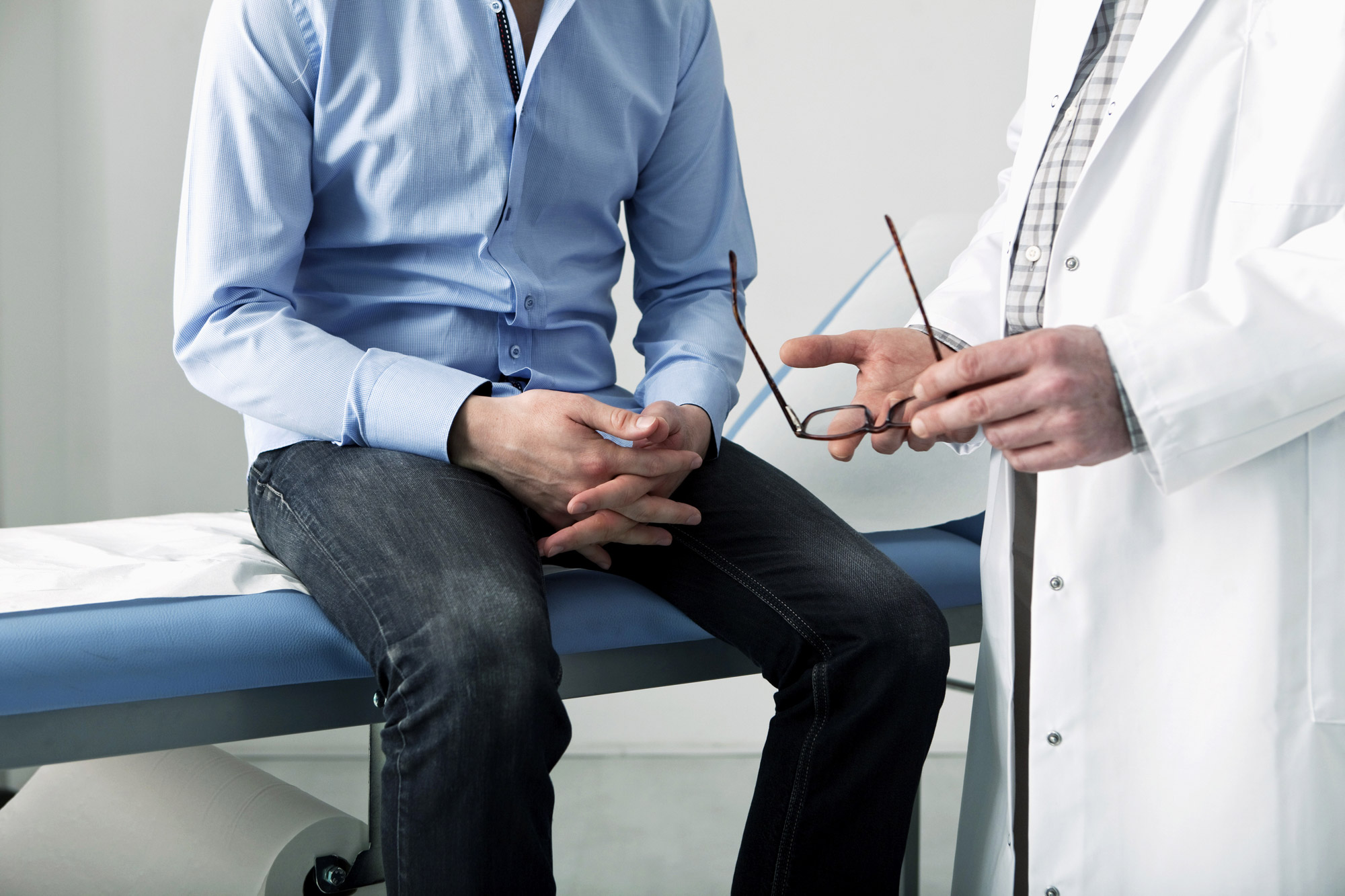General Urology
Prostatitis

Prostatitis is inflammation of the prostate, which may or may not be caused by a bacterial infection. This condition can affect men of all ages.
Prostatitis is inflammation of the prostate, which may or may not be caused by a bacterial infection. This condition can affect men of all ages. Having prostatitis does not increase your risk of getting any other prostate disease. Some of the symptoms of prostatitis are similar to those caused by an enlarged prostate, such as the frequent urge to urinate. Prostatitis can also be accompanied by chills and fever, in acute infections, and by pain or burning during urination.
There are several types of prostatitis. If you suspect you might have prostatitis, it´s important to work with your physician to determine what type you have.
Acute Bacterial Prostatitis
This is the most rare; however, it is often the easiest to diagnose and treat. Symptoms may include body aches and fever, but may also include lower back pain and/or pain in the genital area along with frequent, painful and/or burning urination. Bacteria and white blood cells are present in the urine, indicating infection.
Chronic Bacterial Prostatitis
Chronic bacterial prostatitis presents as recurrent, low intensity infections of the prostate gland. Symptoms are similar to acute bacterial prostatitis but less severe. It can be difficult to diagnose because there is often no evidence of an infecting organism in the prostate fluids when tested. The usual treatment is long-term antibiotics and anti-inflammatories.
Chronic Nonbacterial Prostatitis/Chronic Pelvic Pain Syndrome
This is the most common type of prostatitis diagnosed and unfortunately the most difficult to treat and resolve. Symptoms include chronic urinary, genital and pelvic pain that is thought to be due to inflammation of the prostate. Antibiotics, anti-inflammatories, supplements, and physical therapy are often used to provide symptom relief.
Digital Rectal Exam (DRE)
This quick, simple procedure reveals the size, shape and texture of the prostate. It also helps to identify if the prostate is soft or hard, bumpy or smooth, warm or tender. As a result, the physician will be able to determine what, if any, additional tests are necessary.
Prostate Massage
During the Digital Rectal Exam, the physician will massage the prostate gland to expel fluid from the prostate into the urethra, which is then examined for signs of infection.
Sequential Urine Test
To determine the location of an infection, three urine samples may be requested, including a measured sample of urine, a second sample of any discharge that results from a prostate massage, and a third sample of urine remaining in the bladder following the prostate massage. The first sample washes bacteria from the urethra, the second contains prostatic fluid, and the third includes bacteria in the prostate.
Imaging Tests
Technology makes it possible to produce sophisticated images of the prostate for diagnostic purposes, including:
- Ultrasound (images created by sound waves)
- Magnetic Resonance Imaging (MRI) (scan producing images of the soft tissues of the body)
- Computerized Tomography (CT), a scan producing images of the soft tissues of the body.
The treatment of non-acute prostatitis is challenging. Patients are typically prescribed antibiotics initially to see if they respond clinically. In some cases, a chronic infection can be difficult to eliminate; therefore, longer treatment courses may be required to completely rid the infection. The physician may also prescribe over-the-counter pain relievers and anti-inflammatories to reduce the discomfort.
Other therapies that can be used to relieve the symptoms, include:
Heat Therapy
This utilizes warm sitz baths (sitting in a tub of warm water) and hot compresses.
Alternate Hot and Cold Therapy
This involves the application of alternating hot and cold compresses to the prostate area. A hot compress is left in place for 10 minutes, and then a cold compress is applied for 10 minutes. This cycle is then repeated 2 or 3 times daily.
Supplements/Medications
Numerous medications and supplements have been used to treat chronic prostatitis with mixed results including alpha blockers, saw palmetto, zinc and anti-depressants.
Physical Therapy
The use of Pelvic Floor Physical Therapy has been shown in many studies to benefit patients with Chronic Nonbacterial Prostatitis. Interventions can include myofascial release, therapeutic stretching and exercise, and biofeedback.
